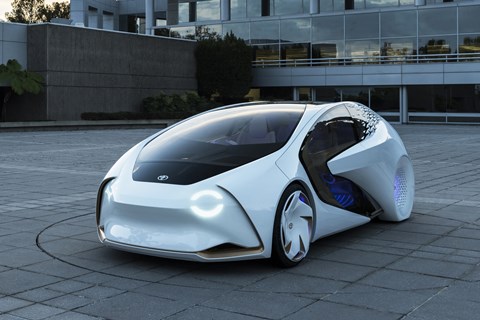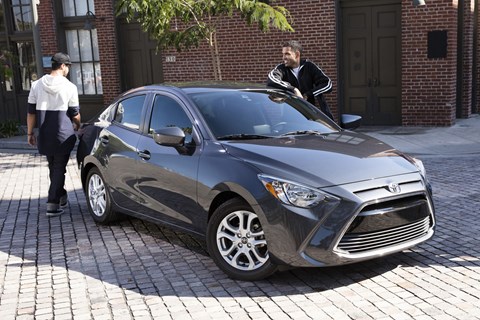► Toyota and Mazda join forces
► New US factory, EV development…
► …and a stake in each other
Mazda has big plans as it partners up with fellow Japanese heavyweight, Toyota.
The team-up has led to a flurry of announcements on the partnership’s purpose, including joint EV tech development, a new factory in the US and a whole host of juicy product details.
The venture is rather dryly being called a ‘business and captal alliance’, and is the next stage of a partnership that technically started back in May 2015. Read on as we explain what it’s all about.
1) A Nissan Leaf rival is coming
Well, sort of, and it could be a long way off. There are plans to jointly develop electric vehicle tech ‘for the basic structure of competitive electric vehicles.’

Toyota may be the king of hybrid tech but neither brand has really got to grips with full EV cars with much enthusiasm. Neither brand has anything mainstream enough to take on Nissan’s Leaf, for example, and European manufacturers are busy surging their electric car development processes.
If ‘basic structure’ is anything to go by, there could be a joint EV platform in the pipeline from Mazda and Toyota but it’s too early to say.
2) A tech renaissance is on the horizon
Infotainment and safety tech is another area of focus for the venture. Along with R&D into improving the two brand’s multimedia systems, Mazda will be looking into Toyota’s vehicle-to-vehicle tech and vehicle-to-infrastructure tech with serious interest with ‘the ultimate goal of creating a mobile society devoid of accidents.’
3) There will be model sharing

Mazda is already ‘supplying a compact sedan to Toyota in North America’, which happens to be the Mazda 2-derived Toyota Yaris iA Sedan that’s built in Mexico. Toyota will supply its new partner with a ‘compact commercial “two-box” van in Japan.’ There are also plans to share a little more in future.
4) A new joint US factory
The biggest news is the announcement of a new joint manufacturing plant in the US, with the aim to start production there in 2021. The $1.6bn assembly plant will be capable of producing 300,000 vehicles a year and will provide around 4000 jobs for the US.
The new plant will be responsible for building the Toyota Corolla, which was originally planned to be built at Toyota’s new plant in Mexico alongside an unnamed Mazda model. Toyota claims that the U-turn on where to produce the Corolla will have ‘no substantial impact on Toyota’s investment and employment there’ as the brand plans to produce the Tacoma pickup there instead.

Mazda says that it ‘expects to produce crossover models that Mazda will newly introduce to the North American market’ at the new plant. The Mazda CX-3, CX-5 and CX-9 are already on sale in the US, so this could be one of Mazda’s upcoming coupe-SUV models.
5) Both brands seem to be acting on Trump’s threatened import tax
From Mazda’s point of view, building cars in the US for the US will help the brand’s growth. However, as Mazda mainly builds cars in Mexico and Japan, it should help the brand save some dosh when it comes to the threat of further import duties threatened by current US President, Donald Trump, too.
Corolla production in the US should also take some of the sting off the potential import tax for Toyota, too, as it’s one of the brand’s bestsellers across the pond, alongside the RAV4 and Camry.
In fact, the plan has already put the two car giants into the good books of His Trumpness:
6) They will own a piece of each other…
Both brands will be mutually acquiring an equivalent amount of share in each other. Toyota is buying almost 32 million newly issued common stock shares to the tune of 50 billion yen (£345m) while Mazda is taking on some of Toyota’s treasury stock that’s equivalent in value. The capital gained will go towards setting up the joint venture.
7) …but the brands will still remain separate
This alliance doesn’t mean that both brands are now symbiotic. There is a stress in the announcement that there will be autonomy in both brands despite the co-operation: ‘over the medium- to long-term, the two companies will build a favourable relationship that respects the autonomy and equality of each party.’
Check out our Mazda reviews here